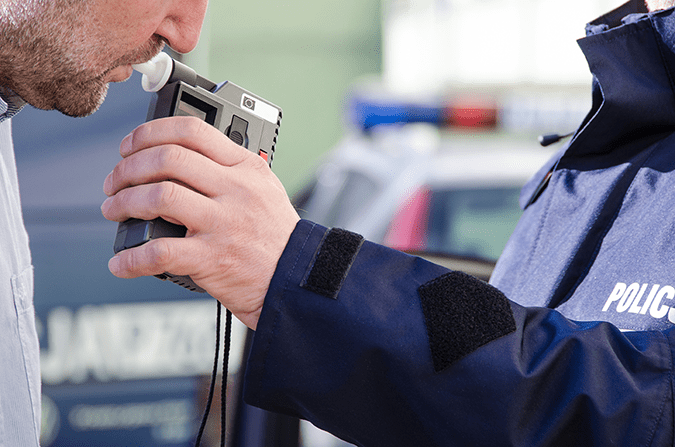
Evidential breath alcohol instruments play a vital role in law enforcement and workplace safety by providing scientifically reliable measurements of a person’s blood alcohol concentration (BAC) through breath analysis. These instruments are commonly used to determine alcohol impairment in drivers and employees subject to workplace drug and alcohol testing programs. Unlike many alcohol screening devices, evidential breath testers are designed to produce legally admissible results that can withstand scrutiny in court or regulatory proceedings.
What Is an Evidential Breath Alcohol Instrument?
An evidential breath alcohol instrument—also referred to as an evidential breath tester or (EBT)—is a device that measures the concentration of alcohol in a person’s breath, which correlates directly to the level of alcohol in their blood. These devices are evaluated and approved by the National Highway Traffic Safety Administration (NHTSA) and must meet strict performance standards to ensure accuracy and reliability. EBTs can be used to conduct a screening test and confirmation tests.
Evidential instruments are typically used:
• By law enforcement officers during DUI/DWI investigations
• In workplace testing for DOT-regulated industries (e.g., transportation, aviation, pipeline, and railroad)
• In probation and court monitoring programs
The results from these devices are considered evidential, meaning they can be introduced as legal evidence in a court or administrative hearing.
Technology Behind Evidential Breath Alcohol Instruments
Evidential breath testers rely on advanced technologies to analyze breath samples and determine BAC. The two primary technologies used in these instruments are Fuel Cell Sensors and Infrared (IR) Spectroscopy. Some devices even combine both methods for enhanced accuracy and confirmation.
1. Fuel Cell Technology
Fuel cell sensors are the most widely used detection technology in portable or stationary evidential breath testers.
• How it works: When alcohol vapor contacts the fuel cell (a chemical sensor), it undergoes an electrochemical reaction that generates an electrical current.
• Measurement: The strength of the electrical current is directly proportional to the amount of alcohol in the breath.
• Advantages: Fuel cells are highly specific to ethanol and not affected by other substances in the breath. They are also compact and reliable, making them ideal for field use.
2. Infrared (IR) Spectroscopy
This is a common and widely accepted method used in many stationary evidential breath testers (such as those found in police departments).
• How it works: Alcohol molecules absorb specific wavelengths of infrared light. When a person exhales into the instrument, the breath sample passes through a chamber where an infrared light beam is directed through the sample.
• Measurement: The instrument measures how much light is absorbed at the specific wavelength associated with ethanol (alcohol). The amount of light absorbed is directly proportional to the alcohol concentration.
Advantages: IR technology provides high precision, can detect sample contaminants, and often includes safeguards like breath sample volume and flow checks to ensure valid readings.
Key Features of Evidential Breath Alcohol Instruments
To qualify as an evidential device a breath alcohol instrument must typically include:
• Automated breath sample analysis with built-in safeguards against invalid samples: Evidential breath testing instruments must conduct automatic breath sampling with manual sampling as an optional sampling method as needed.
• Internal calibration checks and adjustments as needed: Regular calibration checks are required to check the instruments accuracy and are identified in the manufacturer’s QAP. EBTs must allow for frequent checks and a calibration adjustment if the instrument falls outside of acceptable accuracy tolerances.
• Data logging of test results: The Department of Transportation requires certain testing data to be captured as part of a test record.
• User prompts and tamper-proof design: The commands displayed on an EBT are designed to prompt the testing technician through the test sequence, preventing them from bypassing any of the critical testing steps or altering testing outcomes or data.
• DOT/NHTSA approval: Evidential breath alcohol instruments are evaluated and approved by the National Highway Traffic Safety Administration and can be located on NHTSA’s Conforming Products List (CPL).
Conclusion
Evidential breath alcohol instruments are critical tools in the fight against impaired driving and in ensuring workplace safety. By using sophisticated technologies such as infrared spectroscopy and fuel cell sensors, these devices provide accurate, reliable, and legally defensible BAC measurements. Whether on the roadside or in a workplace setting, these instruments uphold public safety and help enforce compliance with alcohol-related laws and regulations.
If you’re selecting an evidential device for workplace or law enforcement use, it’s important to choose a model that meets your regulatory requirements and includes the technology best suited to your environment.